In this article, let’s find out the answer to your question: what do the lights on my dashboard mean? Many drivers face unfamiliar lights and symbols on their dashboards every day.
According to Goodyear Auto Service and Just Tires survey in 2019, young drivers are not as familiar with dashboard signs (51% of respondents) as emojis (88% of respondents).
This can be attributed to the excitement of having a new car and getting behind the wheels to drive. Hence, the Millennials find it boring to go through the thick manual and will rely instead on the internet.
Car Warning Light Symbols and Indicators
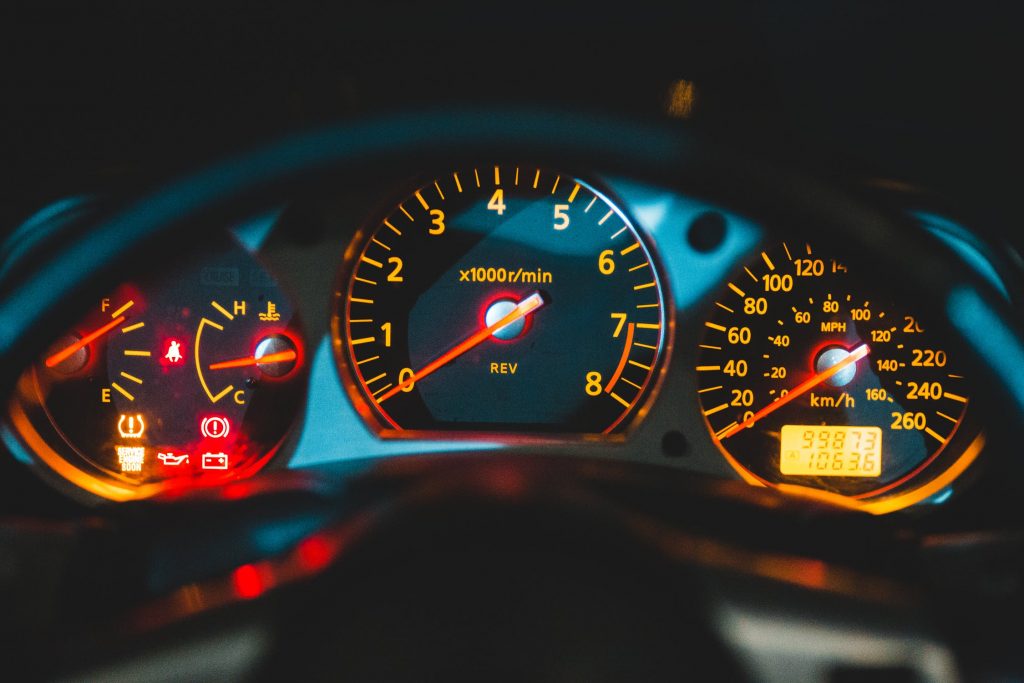
Your car has a computer and various sensors that monitor and runs all of your vehicle’s components, ensuring that the parts are functioning properly. The computer will alert you via lights on your dashboard when something goes wrong.
Most carmakers share a common set of dashboard signs and signals. These are grouped by their color:
1. Red warns the driver that there is a critical issue
2. Next, yellow or orange means that a system or components need checking soon
3. Finally, blue or green means the feature is active
Red warning symbols
As mentioned above, these symbols warn drivers of a serious problem or potential safety issue.
1. Engine temperature
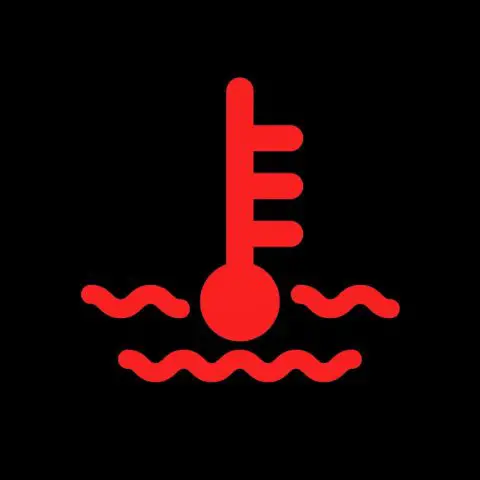
Represented by a red thermometer symbol, it warns you that your engine is too hot. It could be due to low engine coolant levels, leaky radiators, clogged pipes, or a blown gasket.
However, regardless of the cause, you should safely pull over and turn off the engine immediately to let your car cool down. Driving with the temperature warning light on can severely damage your engine.
If you notice that the car’s temperature goes up and down, that is another issue. If you can’t diagnose the problem, call a tow service immediately and bring your car to a repair shop.
In some cars, the warning symbol also comes in blue, which means that the coolant temperature is below what is needed for optimum performance. Typically, it shows up when you start in the morning, and the symbol should disappear after the car warms up.
2. Brake system warning light

If you see this symbol, it simply means that you have your handbrakes on. But if the light is still on after disengaging the handbrake, it could mean your car is low on brake fluid or something more complicated.
Moreover, it could mean that the brake pads are worn or an ABS problem. Worn brake pads can be easily recognized when it squeaks when you hit the brake pedal. On the other hand, if the problem is the ABS, you may need to use an OBDII scanner to tell which ABS sensor is bad.
Regardless of the cause, it is dangerous for you and other drivers if you keep driving.
The best thing to do is safely pull over and call roadside assistance or a tow.
3. Door open warning light

You may not consider this symbol a critical warning for your car; it can be hazardous for other motorists and pedestrians. If a door is not closed properly, it could swing open when you stop and slam an object or, worst, a pedestrian.
Most of the time, the doors are closed, but the hatches are slightly loose. This is why you can barely notice it until you see the warning symbol on your dashboard.
Some cars can identify which door is open or not shut properly. If you left the door open overnight, it could drain your batteries. So make sure to shut the doors properly before leaving the parking.
4. Charging system warning light
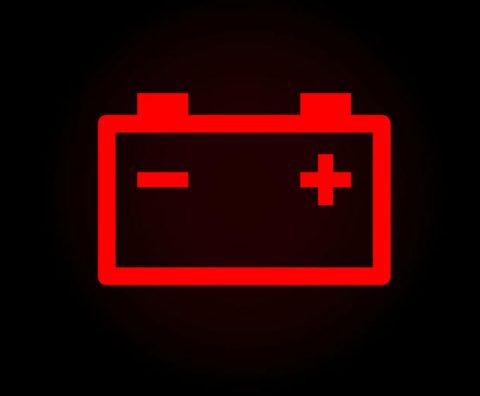
Pay attention to this warning symbol if you don’t want to get stuck in the driveway. The red battery symbol on your dashboard indicates that the battery voltage level is below normal.
Further, it could also mean the charging system is not functioning properly. Turn off car accessories except your headlight if you are driving at night.
Unlike the other dashboard icons above, it is advisable to continue driving until you get somewhere safe because the car might not start again. Check the battery terminals, drive belt, and your battery’s condition.
Related: How Long Do Car Batteries Last? It Depends on Many Factors
5. Seatbelt warning light
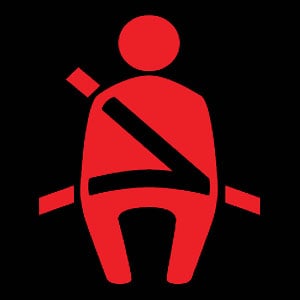
Like the door open warning, the seatbelts warning sign may not be a critical issue for the car’s performance. However, a properly fastened seatbelt can differentiate between life and death.
Did you know that seat belts reduce the risk of death by 45% and cut the risk of serious injury by 50%? Seat belts prevent drivers and passengers from being ejected during a crash.
All modern cars have seatbelt sensors with a loud beeping to alert drivers and passengers to fasten their seatbelts. The alarm will become increasingly annoying, making it easier to put on your seatbelt to make it stop.
Related: Seat Belt Stuck: Easy Tricks to Fix it
6. Low oil pressure light

Your car relies on multiple liquids to keep all the parts and components running optimally, and it can be critical if you encounter any issue with these liquids. Hence, the oil pressure warning symbol on your dashboard means there is a problem with your oil – usually, the oil level is too low, or there is not enough oil pressure.
As soon as the warning symbol comes on, safely pull over and check the oil level. If the oil level is too low, fill it with the recommended type of engine oil as stated in the manual. Did you know that there are instances where the oil pressure light turns on every time you hit the brake? Here’s why.
You may also want to check your oil pressure sensor. It is not safe to drive a bad oil pressure sensor. It won’t trigger any warning when your engine runs with low oil pressure. If the warning symbol persists, consult the manual or seek help from a mechanic.
7. Airbag warning light

A faulty airbag won’t go off during the crash, which means that the passenger and driver may get injured seriously, or also the bag deployment could be so nasty that it can cause a shock causing an injury.
The airbag warning light indicates a fault with the airbag. If it is on, there could be chances that the airbag won’t inflate in a crash or that it may inflate unexpectedly, causing shock, injury, or hindering your view.
This warning can impact your safety on the road, so it is best to have it checked by a mechanic instead of diagnosing it on your own.
If at this point you’re still wondering, what do the lights on my dashboard mean? Then let’s discuss the yellow and orange warning lights on your dashboard.
Yellow or orange warning signs
Yellow or orange warning lights are advisory signals indicating that a component or system will need to take action.
8. Check engine light

The check engine light illuminates for a few seconds when you switch on the engine to check the system. However, if you encounter this while driving, an engine operation fault is detected.
There are many reasons why it turned on. This includes loose or damaged gas cap, failed or failing O2 sensors, ignition issues, or catalytic converter failure.
Depending on your car model, the check engine light may either blink or remain steady to indicate the severity of the issue. A trouble code is stored in the computer’s memory every time the check your engine light is triggered. Using a diagnostic tool, you can use the code to identify the issue properly.
Since the causes range from minor to serious problems, it is best to learn how to read the codes using a scanner. Remember to pull over in a safe location before trying to diagnose the issue. If you don’t have a scanner, you may seek the help of a certified mechanic.
9. ABS light warning

ABS means an anti-lock brake system. Just like the check engine light, it illuminates as part of a system check every time you turn on the car.
When the ABS light stays on after the system check or while driving, there is a problem with your car’s brake system. Hence, it is unsafe to keep on driving. ABS prevents the tire from locking up, which can help you apply the brake safely and steer during an emergency.
There may be several reasons why the ABS light is on. This includes a blown fuse, damaged/dirty sensor, broken wires between sensors and control, or ABS controller is not working. Fortunately, you can also diagnose the problem using a fault code reader.
10. Tire pressure monitoring system (TPMS)

Correct inflation pressure (psi) results in the best tire performance, safety, and fuel savings.
A Tire Pressure Monitoring System detects overinflated or underinflated tires. If the warning symbol turns on, slow down and pull over safely to check your tires.
Tire pressure can be affected by a lot of factors. For instance, temperature could affect tire inflation. The air in your tire will take up more volume should the temperature increase.
Likewise, tire pressure would drop when the temperature plunges. These temperature changes can trigger the tire pressure warning symbol on your dashboard. You may read our articles on tires for more guides.
11. Glow plug indicator

This is one of the lesser-known dashboard warning lights. The glow plug indicator is exclusive for diesel vehicles, which means that the glow plug is warming up. A glow plug is a heating element activated when the engine is cold.
You should not start the engine until the warning symbol light is off. If you see the indicator flashing, it may indicate an issue.
12. Traction control
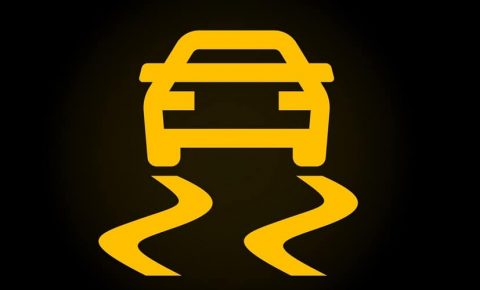
The traction control light indicates that the tires are not gripping the road as well as they should. It is commonly active during rainy or snowy weather conditions.
The light will flash, indicating that the traction control is working, helping to keep the vehicle in control. If you turn it off, you may notice that your vehicle handles it differently when driving on a slippery road surface. It is best to leave your traction control on at all times.
However, in rare circumstances, you may need to turn it off temporarily. These include the following:
If you need snow chains in your tires and the traction will interfere.
If you are trapped deep in mud or snow, the vehicle cannot move on its own.
13. Washer fluid reminder

The washer fluid ensures a clean windshield so you can drive safely. The washer fluid reminder symbol indicates that washer fluid is low. You can find and refill the washer fluid reservoir in the vehicle’s hood. The cap should have a similar symbol.
But if you’ve refilled the wiper fluid but it’s still not coming out, you might need to read this article to find out why.
Did you know that you can make your own windshield wiper fluid? It is easy to make, with a few ingredients that one can find in your home.
Blue, green, or white dashboard lights
These information lights are just that, for information. You should rarely be concerned if you see any of the dash symbols below:
14. High beam
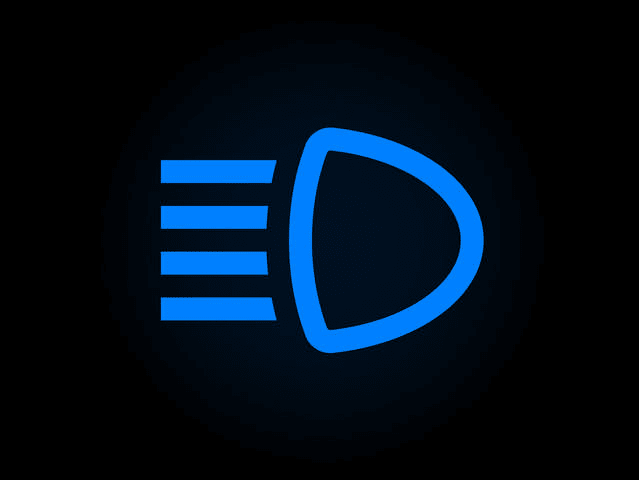
One of the oldest dashboard symbols simply means the high beams are active. Make sure to use the high beam only in an extremely dark environment.
Knowing this symbol is important as simple as it seems, as some drivers may accidentally engage high beams without realizing it. If you don’t use it properly, it may be dangerous to fellow drivers on the road.
15. Cruise control
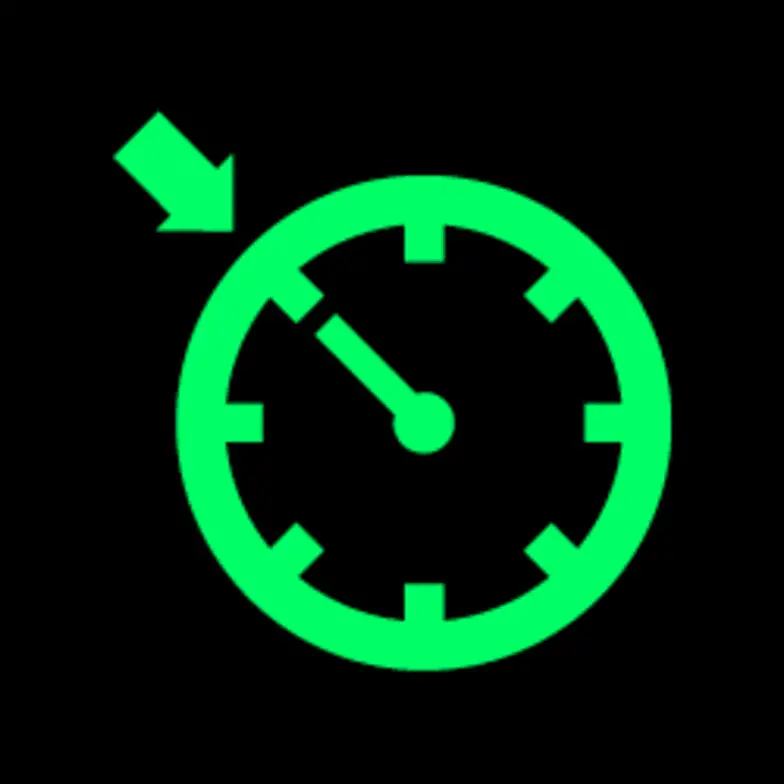
The cruise control symbol on your dashboard is illuminated when it is engaged. Cruise control helps relieve some of the fatigue related to long-distance driving. It also helps maintain a constant speed which could be very useful for lead-foot drivers.
If you plan a long trip, learn more about this feature in your manual. In some instances, cruise control is not advisable and may pose danger.
16. Park Assist

The green version will be visible when the system is activated and working. Depending on the car model, the park assists feature can be activated by pushing a button or automatically when you are reversing at low speeds.
However, if it is flashing or turns yellow, the system may detect an issue, so read your manual first.
Conclusion
The answer to what the lights on my dashboard mean could be the difference between an enjoyable ride and a breakdown. So always take the lights on your dashboards (especially the red ones) seriously, as it may compromise your car’s performance or safety if you ignore them.
We can’t cover all the lights and symbols in this guide because it varies between car models and manufacturing. Some symbols are also self-explanatory, like the Low Fuel Symbol. Although there are instances where the low fuel light illuminates even though you have a full tank.
Start learning how to use fault code scanners to help you diagnose some of the warning signs. However, if you encounter an unfamiliar dashboard warning, pull over safely and call roadside assistance or a certified mechanic.
Watch this Youtube video to review what you’ve just learned:
Note: Every car model’s dashboard may be different, and the symbols listed above may have different designs and colors. So be sure to check your manual for more accurate information.
Drive Safe and follow us on Facebook!
